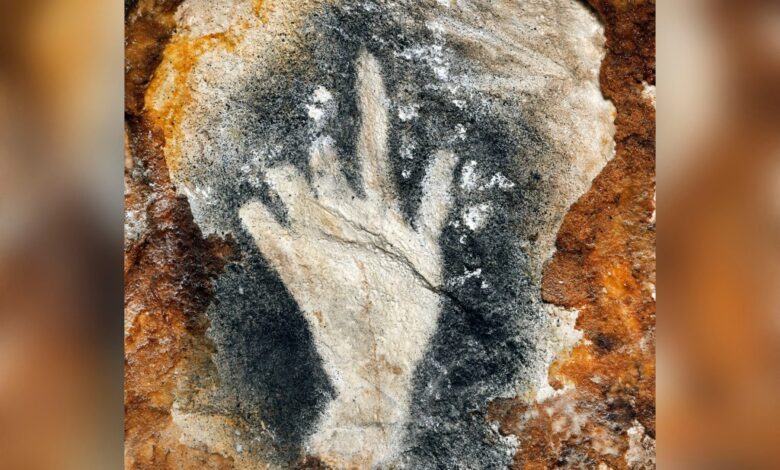Our prehistoric ancestors cut off fingers for religious rituals: study

Say what you want about the body modification trends of the 21st century, but our prehistoric ancestors did a number to their digits.
Men and women of the Palaeolithic era in Western Europe may have chopped off their own fingers as part of religious rituals, according to researchers.
The proof? Hundreds of cave paintings depict hands missing at least a portion of their phalanges.
“There is compelling evidence that these people may have had their fingers amputated deliberately in rituals intended to elicit help from supernatural entities,” archaeologist professor Mark Collard of Simon Fraser University in Vancouver told The Guardian.
Collard recently presented a paper on his long-peddled self-mutilation theory at a European Society for Human Evolution, pointing to 25,000-year-old hand paintings in France and Spain.
At least one finger was missing from each of the 200 prints. Some only parted with an upper segment, while others lost several.
Collard’s presentation built upon his original idea — published in a 2018 study — that our prehistoric ancestors purposefully amputated to appease deities.
As evidence, he and Ph.D. student Brea McCauley pointed to 100 other ancient societies where people practiced finger amputation and memorialized their lives with print and stencil hand paintings.
“This practice was clearly invented independently multiple times,” they state in the paper. “And it was engaged in by some recent hunter-gatherer societies, so it is entirely possible that the groups at Gargas and the other caves engaged in the practice.”
Scientists previously theorized the amputations could have reflected the use of sign language or a counting system, while others suggested it could have been caused by frostbite or that painters simply bent their fingers to create an illusion.
Collard and McCauley argued that finger amputation is not the only form of self-mutilation practiced by ancient — and even some modern — societies.
Other communities turned to fire-walking, face-piercing with skewers and putting hooks through skin so a person could haul heavy chains behind them instead, all of which accomplished similar, ritualistic goals.
They also pointed to the Dani women of New Guinea Highlands, who continue to this day to chop off their fingers to signify the death of a loved one.

“Quite a few societies encourage fingers to be cut off today and have done so throughout history,” he told the outlet.
“We believe that Europeans were doing the same sort of thing in palaeolithic times, though the precise belief systems involved may have been different. This is a practice that was not necessarily routine but has occurred at various times through history, we believe.”




